#David Bielander
Text

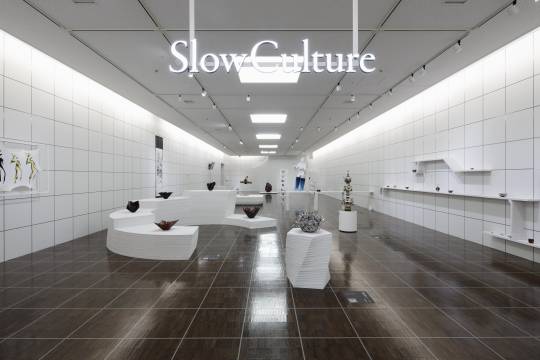
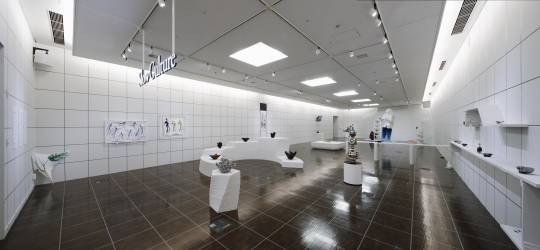
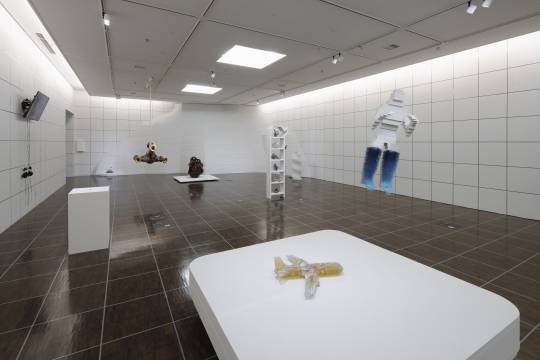
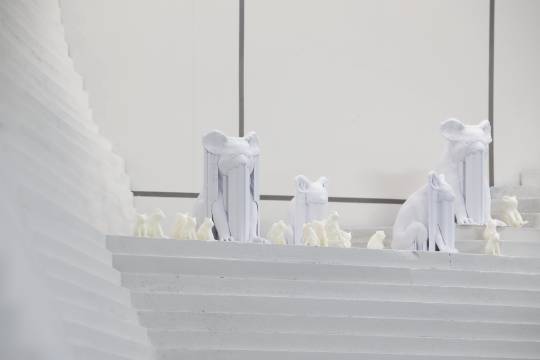

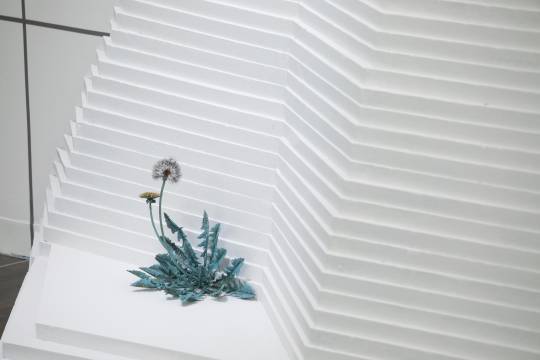
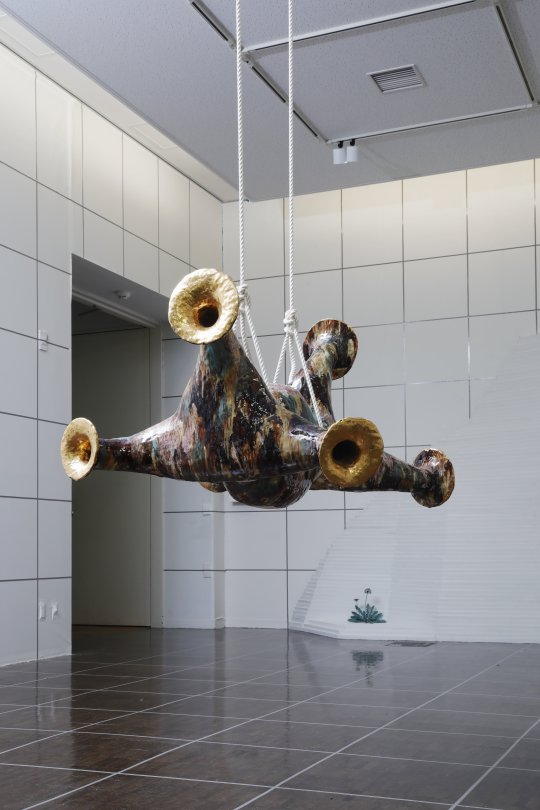
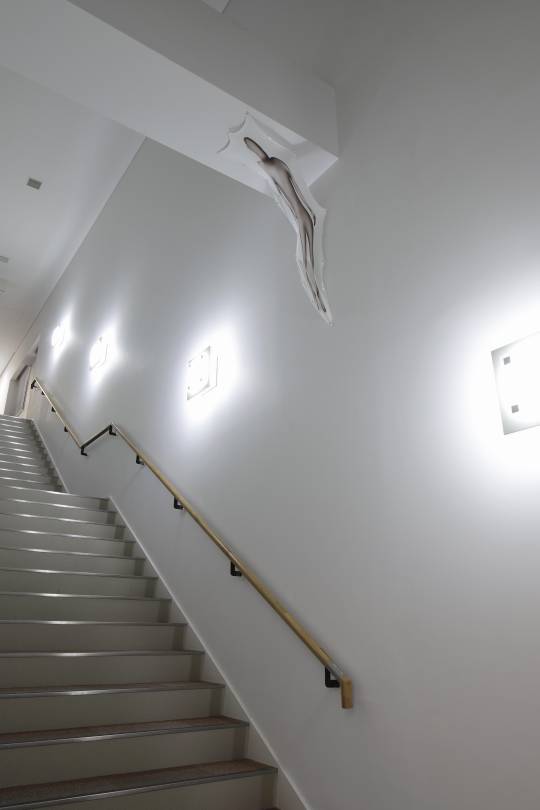
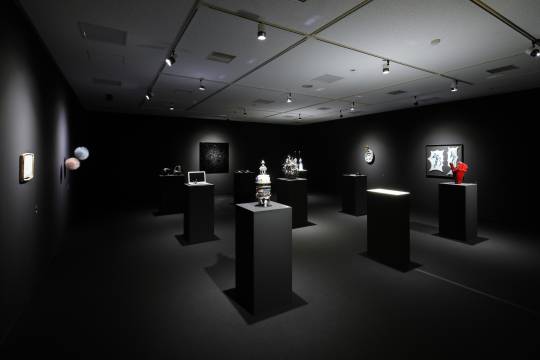

Slow Culture #kogei
Slow Culture #kogei at Kyoto City University of Arts Art Gallery @KCUA
Saturday, April 22 – Sunday, June 25, 2023
Photos by Takeru Koroda (来田猛), courtesy of Kyoto City University of Arts
石塚源太、隗楠、𡧃野湧、織田隼生、菊池虎十、木田陽子、國政サトシ、西條茜、佐々木萌水、佐々木怜央、鈴木祥太、つのだゆき、デヴィッド・ビランダー、土岐謙次、西久松友花、彦十蒔絵
熊谷卓哉、小松千倫
David Bielander, Hikoju Makie, Genta Ishizuka, Yoko Kida, Taketo Kikuchi, Yuka Nishihisamatsu, Toshiki Oda, Akane Saijo, Moemi Sasaki, Leo Sasaki, Shota Suzuki, Kenji Toki, Yuki Tunoda, Yu Uno, Nan Wei
Takuya Kumagai, Kazumichi Komatsu
#exhibition#@kcua#kcua#takeru koroda#David Bielander#Hikoju Makie#Genta Ishizuka#Yoko Kida#Taketo Kikuchi#Yuka Nishihisamatsu#Toshiki Oda#Akane Saijo#Moemi Sasaki#Leo Sasaki#Shota Suzuki#Kenji Toki#Yuki Tunoda#Yu Uno#Nan Wei#Takuya Kumagai#Kazumichi Komatsu
0 notes
Text
TWENTY: Solothurn (CH) bis 16.12.2023
Nach 20 Jahren Engagement für zeitgenössischen Schmuck und Objekte lädt die Galerie S O Sie ein, diese spannende Reise in der Galerie S O in Solothurn zu feiern.
Hans Stofer, heart 2022, iron, stainless steel
Die Galerie S O Solothurn zeigt zum 20-jährigen Bestehen eine Rückschau mit Werken und Arbeiten von Künstlerinnen und Künstlern aus dieser Zeit – eine Gruppenausstellung aus dem Bereich…

View On WordPress
#Andi Gut#Bernhard Schobinger#David Bielander#Fotografie#Galerie SO#Hans Stofer#Jubiläum#Lisa Walker#Objekt#Otto Künzli#Peter Bauhuis#Schmuck#Schmuckkunst#Solothurn
0 notes
Link
via Google Arts & Culture website.
Details
Title: „Pearly Pig" brooch
Creator: David Bielander
Date Created: 2003
Location Created: Munich
Rights: Schmuckmuseum Pforzheim
Medium: Pearls, gold, steel, silk.
I love this German piggy!
0 notes
Text
Annotation:
I was particularly interested in the concept of 'intimate relationships' when I started the MFA programme. The bond between a parent and their child, the intimacy between lovers, and the attachment between a pet owner and his or her pet are just a few instances of relationships that bind each individual to an inseparable unit. A connection was developed and moulded by the experiences of joy, support, pain, loss, and many other complicated and inexplicable sentiments. Memories, childhood, and cultural backgrounds are heavily impacting my design approach. So I’m interested in how other artists with eastern-background explore their cultural identity and oriental philosophy within their artworks. (Zhi Ying, Jana Machatova, Maiko Takeda, Mari Ishikawa, Chiharu Shiota, Felicia Li)
I use jewellery as the medium because of its specific function: body ornament. My understanding of jewellery was shaped by Georg Simmel’s opinion that clothes and jewels are the artefacts we use to construct our social body. The connection between the human body and jewellery allows more possibilities for interaction with the public. A piece of jewellery can be viewed as a statement, a story, or a pure aesthetic. I was also encountering Susan Stewart’s discussion of how jewellery triggers narrative through personal connections in her book On Longing: Narratives of Miniature, the Gigantic, the Souvenir, the Collection. Stewart’s writing is a key influence in the development of my practice, which let me reflect on how jewellery generates feelings and how to utilise jewellery as a conduit for conveying meanings. I’ve selected several artists who work with narrative and figurative jewellery, such as Peter Machata, Monika Brugger, Mari Ishikawa, Felicia Li.
Materiality is another important aspect of my practice, as it conveys meaning and determines the visual representation of the final work. So, a key precedent for this dossier has been addressing artists who focus on materiality. (Heechan Kim, Peter Machata, Maiko Takeda, Julia Maria Kunnap, Bettina Dittlmann, David Bielander) Due to lockdown and no access to the gold and silversmithing studio, I started to work with alternative daily-accessible materials, such as plastic and resin. In this dossier, I also include artists who work with unconventional materials and inspiring ways of making. (Rachael Colley, Matilde Mozzanega, Lisa Walker)
Semiotics is closely related to my field of practice: jewellery. Jewellery as a non-verbal means of communication shapes and conveys information by placing it on the human body. With the pattern, the function, the material, jewellry makes various statements. With an interest in whether a symbol and its associated meaning change, convert, or decay within this rapidly developing modern culture, I look into the artist who works with motifs. (Matthieu Bourel, David Bielander, Kim Buck)
As the semester progressed, my interests shift from the pet-owner relationship to the parent-child relationship. The family tie is a connection but also a constrain, which refers to respect and obedience. As a child, I was told to be filial piety by ‘Listen to your elders’. To me, the bond between parents and myself is the juxtaposition of blessing and struggle. This led to my project to use ‘Ear’ as a representation to explore the sophisticated expression of listening. Thurs, I looked into various artworks incorporating ear to emphasis the notion of listening. (Heather V McLeod, Hubertus Von Skal, Gerd Rothmann, Louise Bourgeois)
2 notes
·
View notes
Text



David Bielander :: 18 karat gold, white gold staples. 2015
209 notes
·
View notes
Text
Critical Annotation - Summary 2
This dossier is an extension of work commenced earlier in the semester. As before, I have continued to assemble works and texts viewed through a framework of materiality. When I started this work, I noted that materiality is a particularly broad framework within which to be considering art. Many of my early investigations focused on material as a physical presence. As I deepened my research for the second half of my dossier, and in consideration of some of the de-materialist concepts I had researched previously, I began to consider more ephemeral and less tangible forms of material, such as sound, space, and the internet. As an object-orientated artist, this has been a very new line of investigation in my research, yet it has felt relevant and poignant during these times of social isolation.
After broadening my own definitions and understandings of the nature of material, I then narrowed the focus of my lens, choosing to specifically consider works that I have identified to have an obliterative and/or meditative treatment. This particular focus has arisen from my recent writing about my own practice, and my identification of my own practices that would qualify as obliterative or meditative.
As before I initially cast a wide net. In order to consider materiality beyond physical form, I needed to embrace abstraction and new media, and so I decided to generally avoid looking at jewellery for a short time. As I narrowed in my focus I also sharpened my search criteria, explicitly seeking out art-jewellers who are working in similar materials or themes.
In these investigations, I identified many reoccurring intersecting lines of thought in materiality, the most significant of which is labour. In jewellery making it’s almost impossible not to think about labour and its relationships to value, environment, and consumption. Jewellery artists such as Helen Britton, whom I didn’t get around to including in the dossier this time, and David Bielander have created communities of practice focused on value and sustainability through initiating and responding to material considerations in an ongoing conversation by way of making. These themes can and have all been explored effectively through a material framework. In my research I have attempted to explore how some of these theme may be explored through a material obliteration/meditation framework.
When I ask myself: “What does material mean to me?”, I am still not sure of the answer. In attempting to analyse works through the lens of materiality, I find myself now reconsidering my existing understandings of the nature of material and object-hood. Ultimately, this can only be good for my practice. As an object-maker, materiality is at the core of my craft and therefore requires constant interrogation, re-contextualisation, and expansion.
1 note
·
View note
Photo

David Bielander, “Flat Face” Brooches,
Silver, various Stones,
Left 1.675 x 2.8 x .65 inches, Right 2.1 x 3.375 x .5 inches
photo Dirk Eisel, Courtesy of Ornamentum Gallery
#art#design#jewellery#jewelry#brooch#face#silver#gemstones#luxury#ornamentum gallery#david bielander#dirk eisel#fun#funny#humour#pearls
0 notes
Text
Sidekicks zur SCHMUCK München 2023
Hier kommen einige ausgewählte Ereignisse aus dem umfassenden Programm der SCHMUCK München 2023:
Jiro Kamata OCULUS präsentiert von Galerie Biro in der Boutwell Schabrowsky Gallery, Theresienstr. 48 – Das Licht ist sein Medium. Sein Werkmaterial die Kamera-Linsen – die Augen von alten Fotoapparaten. Sie haben vieles gesehen: Landschaften, Menschen, Ozeane. Sie nehmen unsmental mit auf eine Reise.…

View On WordPress
#Anna Eichlinger#Anna Moll#Artcurial Deutschland#Boutwell Schabrowsky Gallery#David Bielander#David Clarke#Franz Marc Museum#Galerie Zink Waldkirchen#Gisbert stach#IHM#Jiro Kamata#KAiros#Karl Fritsch#Margit Jäschke#München#Meet the Artist#Oculus#Paul Kooiker#Rudolf Bott#Schmuck#SCHMUCK München 2023#Schmuckgalerie Biro#Schmuckkunst#Sonderschau#Unk Kraus#Zauber der Linie
0 notes
Photo

Already ONE Year ago... i photographed Artist Helen Britton and her husband Artist David Bielander starring for Helens charity shirt collection to raise money for the Australian wild life suffering from the bush fires. 2020, Munich, Studio Brix
0 notes
Text

David Bielander, Koi, 2013 (Bracelet, Thumbtacks, Leather, 130 x 110 x 90 mm)
After decided to use goldfish as the key theme for my first project, I researched artists who also worked with goldfish. David Bielander’s Koi, 2013 as an example has inspired me to reconsider daily objects and its’ potential functionality. With a careful analysing and transforming of materials, David creates the vivid koi bracelet by utilising thumbtacks, enamel, and leather. In David’s artworks, the unexpected abstraction of materials combining with the familiarity of common objects has revealed a sense of playful and uncanny. In the interview conduct by Art Jewelry Forum, David states that one clear goal of his practice is to play with perception and cause confusion, in other words, to surprise the audience. By looking into David’s methodology, I asked myself a few questions. How to make a concise identification of a jewellery piece? How could materials shape appearance? How could presentation create contrast?
Interview “David Bielander, Koi for Joy” by Art Jewelry Forum retrieved from: https://artjewelryforum.org/articles/david-bielander-koi-for-joy/
0 notes
Photo

Contemporary jewellery can be a good investment
The attraction of contemporary jewellery requires no explanation for those who collect it, whether it comes in the form of earrings, brooches, bracelets or necklaces.
It can be made from precious materials, such as gold or silver, but is often fashioned from far more rudimentary materials, such as aluminium, steel or even cardboard.
Cities with renowned art schools, including Munich and Amsterdam, have pioneered this type of jewellery since the early 1960s.
However, Melbourne is also recognised as an industry leader, largely due to its teaching institutions, such as RMIT and Monash University, which boast world-class gold and silversmithing courses.
Susan Cohn has been an important name in contemporary jewellery since she graduated from RMIT in 1980 and established her own Melbourne business, Workshop 3000, with jeweller Marian Hosking and technician Harry Rowlands.
Her doughnut bracelets – made from aluminium in a number of colours and designs in the early 1980s – were purchased by the National Gallery of Victoria (NGV), as well as museums including the Victoria & Albert in London.
A decade later, Cohn produced clear-plastic versions of the bracelet. Those who had the foresight to snap one up for a relatively modest price would now have to fork out up to $5000 to replace it.
“When I first started making contemporary jewellery, most people referred to me as a designer making jewellery,” Cohn says. “At that time, it really wasn’t understood.”
Other major Cohn pieces include items that looks like they have been crushed under the wheels of a truck. “People would bring in traditional jewellery they no longer wore and it was recycled and compressed into pieces, such as a brooch,” she says.
Cohn also has been instrumental in helping to showcase international contemporary jewellery to Melburnians, with a landmark exhibition, Unexpected Pleasures, staged at the NGV.
Commissioned by the Design Museum in London, it featured 260 pieces, including a crown and a motorbike helmet created for Dutch Princess Maxima by designer and countryman Ted Noten.
Melbourne is also recognised for its unique contemporary jewellery galleries, including Funaki, which opened in Crossley Lane about 25 years ago.
The internationally renowned establishment represents some of the finest contemporary jewellers from Australia, New Zealand and Europe.
“The work always starts with ideas rather than from ‘glitz’ or a brand name,” says gallery owner Katie Scott.
To demonstrate, she displays a concrete brooch by Adelaide-based jeweller Inari Kiuru.
The brooch, which sells for $880, is infused with chips of a burnt road sign from Victoria’s King Lake that experienced the 2009 “Black Saturday” disaster.
“The brooch is loaded with history,” says Scott, who sells other pieces for up to $15,000, such as a crown that can also be worn as a necklace by Swiss jeweller David Bielander. Although the pricey item looks like cardboard from a distance, it is actually made from silver and gold.
Bielander’s work will be included in the NGV’s Triennale, which brings together art, design and architecture from more than 80 artists and designers, from December 19 to April 18.
For Scott, contemporary jewellery is neither age or gender specific. “It’s quite an odd term, given it’s been going for decades. The Americans call it art jewellery.”
Scott says it appeals most to “those who know themselves, are confident to express who they are and are unlikely to have a string of pearls in the mix!”
0 notes
Photo

David Bielander
Smoke Ring Machine, 1996
In an earlier post, I mentioned David Bielander’s Smoke Ring Machine. Unfortunately, I couldn’t find images of the machine in action. I was fortunate enough to see some of David’s personal image collection from this work during a lecture on 5 February 2020.
The machine works as such: When a coin is inserted, the buyer would press a button upon which the machine produced a ring of smoke, which floated into a velvet bag. The bag was strung closed by the machine and then deposited for the buyer. The buyer then has the option to keep their bag closed, and assume that the smoke ring continues to exist, or open the bag and destroy their jewellery with certainty.
Bielander’s humourous device begs a similar question as to Otto Künzli’s Gold makes you blind series - “How much are you willing to pay for an idea?”
In my practice I’ve been attempting, in various ways throughout the years, to subvert and transform the position of the diamond within traditional jewellery tastes. Now, as I expand my materials, I see that the diamond has become abstracted and conceptual in my pieces.
Post References:
Image:
Bielander, D 1996, MUDAC Online Gallery, photograph, viewed 24 April 2020 <https://mudac.ch/en/exhibitions/carte-blanche-a-david-bielander/davidbielander_smokeringmachine/>
0 notes
Photo

Via. @galleryfunaki A nod to the silly season ahead. David Bielander's incredible 'Paper bag (wine)', patinated sterling silver. ⠀ .⠀ .⠀ .⠀ #davidbielander #cardboard #crown #wine #paperbag #contemporarymetalsmith #contemporarysilver #contemporaryjewellery #contemporaryjewelry #joyeriacontemporanea #joalheriacontemporanea #gioiellocontemporaneo #bijoucontemporain #AJF #ajfishere #klimt02 #TJA #jewelleryactivist #thejewelleryactivist
#cardboard#contemporarymetalsmith#crown#ajfishere#tja#jewelleryactivist#joyeriacontemporanea#contemporarysilver#joalheriacontemporanea#davidbielander#contemporaryjewellery#paperbag#contemporaryjewelry#klimt02#ajf#thejewelleryactivist#wine#bijoucontemporain#gioiellocontemporaneo
1 note
·
View note

